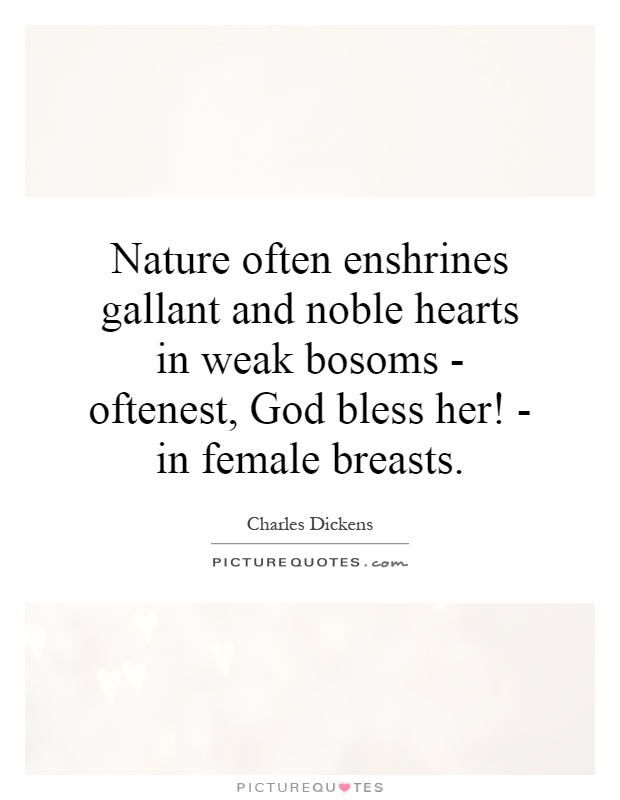Nature often enshrines gallant and noble hearts in weak bosoms - oftenest, God bless her! - in female breasts

Nature often enshrines gallant and noble hearts in weak bosoms - oftenest, God bless her! - in female breasts
Charles Dickens, the renowned Victorian author, was known for his keen observations of human nature and society. In his works, he often portrayed characters who embodied both strength and vulnerability, particularly in the case of female characters. Dickens believed that nature had a way of bestowing gallant and noble hearts in seemingly weak individuals, most notably in women.One of the most iconic examples of this theme in Dickens' works is the character of Lucie Manette in "A Tale of Two Cities." Lucie is portrayed as a gentle and delicate young woman, but she possesses a deep inner strength and unwavering loyalty to her loved ones. Despite her fragile appearance, Lucie's courage and resilience shine through in the face of adversity. She becomes a beacon of hope and love for those around her, embodying the idea that noble hearts can reside in seemingly weak bosoms.
Similarly, in "Great Expectations," Dickens introduces the character of Estella, a beautiful and cold-hearted young woman who is raised to be emotionally detached. However, as the story unfolds, it becomes clear that Estella's icy exterior masks a vulnerable and wounded soul. Despite her upbringing, Estella's innate goodness and capacity for love eventually come to light, revealing the complexity of her character and the depth of her inner strength.












 Friendship Quotes
Friendship Quotes Love Quotes
Love Quotes Life Quotes
Life Quotes Funny Quotes
Funny Quotes Motivational Quotes
Motivational Quotes Inspirational Quotes
Inspirational Quotes